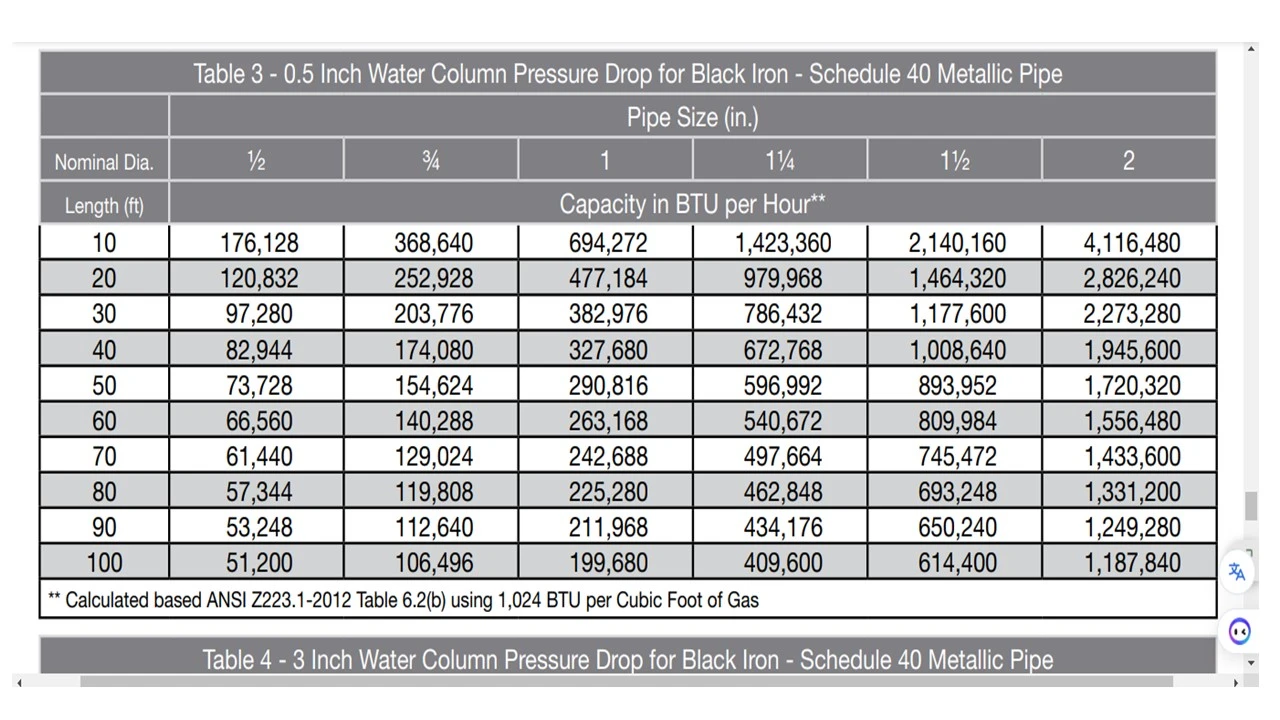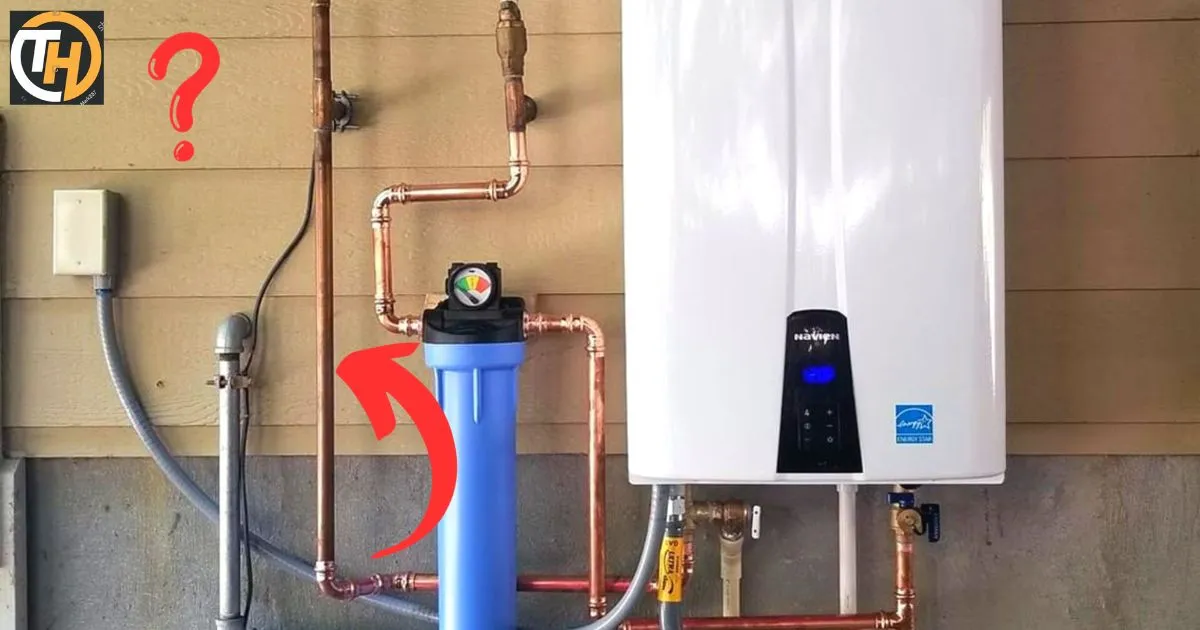When it comes to installing a tankless water heater, one of the critical considerations is the size of the gas line. In this comprehensive guide, we’ll explore why the gas line size matters, how to determine the right size for your tankless water heater, and the importance of professional installation. Get ready to ensure a smooth and efficient supply of hot water in your home.
The size of the gas line is a critical factor in ensuring the efficient and effective operation of a tankless water heater. This factor sets the stage for delving into the vital considerations. And guidelines for correctly sizing the gas line for your tankless water heater.
Why Does Gas Line Size Matter?
The size of the gas line for your tankless water heater is crucial because it directly impacts the unit’s performance. If the gas line is too small, it won’t supply enough fuel for the heater to operate at its full capacity. This can result in reduced hot water production and even damage to the unit.
On the other hand, an oversized gas line can lead to inconsistent combustion, which may trigger safety concerns. It’s essential to find the right balance to optimize your tankless water heater’s efficiency and longevity.
Understanding the Importance of Gas Line Size
Before delving into the specifics of gas line sizing, it’s essential to grasp why it matters, especially when your hot water heater is leaking. The size of the gas line for your tankless water heater directly influences its performance. If the gas line is too small, it won’t supply sufficient fuel for the heater to operate at its full capacity.
This can result in reduced hot water production and, in some cases, even damage to the unit. On the other hand, an oversized gas line can lead to inconsistent combustion, potentially causing safety concerns. To optimize your tankless water heater’s efficiency and longevity, you need to find the right balance in gas line sizing.
Determining the Right Gas Line Size
Gas Pipe System Sizing

Determining the Appropriate Size for the Gas Meter and Regulator
Determining the appropriate size for your gas meter and the regulator is essential for the efficient operation of your gas-powered appliances. To begin, you’ll need to calculate the BTU (British Thermal Unit) requirements for each gas appliance in your household.
For instance, if you have a 199,900 BTU tankless water heater, a 75,000 BTU furnace, a 55,000 BTU range, and a 25,000 BTU dryer. And a 40,000 BTU gas log fireplace, the total BTU requirement for all these appliances adds up to 394,900 BTU.
Gas regulators and meters are typically rated in Cubic Feet per Hour (CFH). To ensure the correct sizing, you’ll need to convert the BTU calculation to CFH. To do this, divide the total BTU by 1,024. In our example, this results in an estimated CFH requirement of 386 CFH.
It’s important to note that when transitioning from a conventional tank-type water heater to a tankless unit, the existing gas meter. The regulator may be undersized for the increased demand. Consequently, to avoid operational issues with your gas appliances. It’s crucial to ensure that the meter and regulator are appropriately sized. For guidance on upgrading these components, you can reach out to your local gas utility for more information and assistance.
Pipe Sizing Methods
Pipe sizing methods encompass various techniques, with calculations employed to ascertain the correct pipe sizes within plumbing or gas distribution systems.
In every situation, a gas appliance with a capacity of nearly 200,000 BTU will necessitate at least a ¾-inch gas supply line, although there may be instances where a ½-inch gas line can be utilized.
There are several pipe sizing methods, each with its own application and considerations:
- Velocity-Based Sizing: This method focuses on maintaining a specific fluid or gas velocity within the pipe to ensure proper flow. It’s commonly used in HVAC and water supply systems.
- Friction Loss Sizing: Friction losses due to the fluid or gas passing through the pipes are calculated to determine the right pipe size. This method is widely used in plumbing and HVAC systems.
- Load-Based Sizing: Load-based sizing considers the total demand or load on the system and ensures the pipes can handle it efficiently. It’s often used in gas distribution systems.
- Pressure Drop Sizing: In this method, the allowable pressure drop across the system is determined, and pipe sizes are selected to maintain this pressure within acceptable limits.
- Sizing Charts and Tables: Standardized charts and tables provided by codes and regulations. It helps select the appropriate pipe size based on flow rate, pressure, and other factors. These are often used in gas, water, and HVAC systems.
- Computer Software and Tools: Various software applications and tools are available for accurate and efficient pipe sizing, taking into account complex factors like pipe material, temperature, and pressure.
- Manual Calculations: In some cases, engineers and professionals may perform manual calculations, considering factors such as fluid properties, and pipe length. The number of fittings and bends.
Determining Pipe Size by Length and Capacity
Determine the Tankless Water Heater’s BTU Rating
Check the manufacturer’s specifications or the nameplate on the water heater to find the BTU rating. This rating indicates the heating capacity of the unit.
Calculate the Gas Flow Rate

To calculate the required gas flow rate, start by dividing the BTU rating by the gas’s heating value. In general, the heating value of natural gas is typically around 1,000 BTU per cubic foot (BTU/ft³). On the other hand, for propane, it’s roughly 2,500 BTU/ft³.
For example, if you have a natural gas tankless water heater with a 150,000 BTU rating, you would need 150,000 BTU / 1,000 BTU/ft³ = 150 ft³ per hour of natural gas.
Consider the Length of the Gas Line
The longer the gas line, the larger its diameter should be to maintain sufficient gas pressure. Longer gas lines have higher pressure drops due to friction.
Measure the total length of the gas line from the gas meter or gas source to the tankless water heater location.
Consult Gas Pipe Sizing Tables
Gas pipe sizing tables are available in local building codes or from the National Fuel Gas Code (NFPA 54).
Size the Gas Line
Use the information from the gas pipe sizing tables to determine the appropriate gas line diameter (typically in inches) based on the calculated gas flow rate and the length of the gas line.
Select the next available larger pipe size if the calculated size is not a standard option. It’s generally better to oversize the gas line slightly to ensure adequate gas flow.
Install the Gas Line
Have a qualified and licensed plumber or gas fitter install the correctly sized gas line according to local codes and regulations.
Always follow local building codes and safety regulations when sizing and installing gas lines. It’s important to ensure that the gas line can provide the required gas flow without excessive pressure drop, as insufficient gas supply can affect the performance of the tankless water heater.
FAQs
What size gas line is needed for a tankless water heater?
The size of the gas line needed for a tankless water heater depends on the heater’s BTU rating and the distance from the gas source.
Do tankless water heaters require a 3/4 gas line?
Yes, many tankless water heaters require a 3/4-inch gas line to ensure an adequate fuel supply.
Do I need a bigger gas meter for a tankless water heater?
The need for a larger gas meter for a tankless water heater depends on the heater’s BTU demand.
What size gas line should I use for a tankless water heater?
The size of the gas line you should use is determined by the tankless water heater’s BTU rating and the length of the gas line. It is advisable to consult gas line sizing charts for precise guidance.
Conclusion
In conclusion, the size of the gas line for your tankless water heater is a critical factor. Its overall performance. An undersized or oversized gas line can lead to efficiency and safety issues. To ensure your tankless water heater operates optimally, consult a professional for the proper gas line sizing and installation. It is crucial to ensure that the gas line is not only appropriately sized but also installed correctly. The installation of your gas line for your tankless water heater should always be entrusted to a qualified professional.
They possess the necessary expertise to install the gas line according to the appropriate code. Additionally, this professional approach is essential to guarantee the safe and efficient operation of your tankless water heater. It ensures that you have a consistent supply of hot water while strictly adhering to all safety standards.











